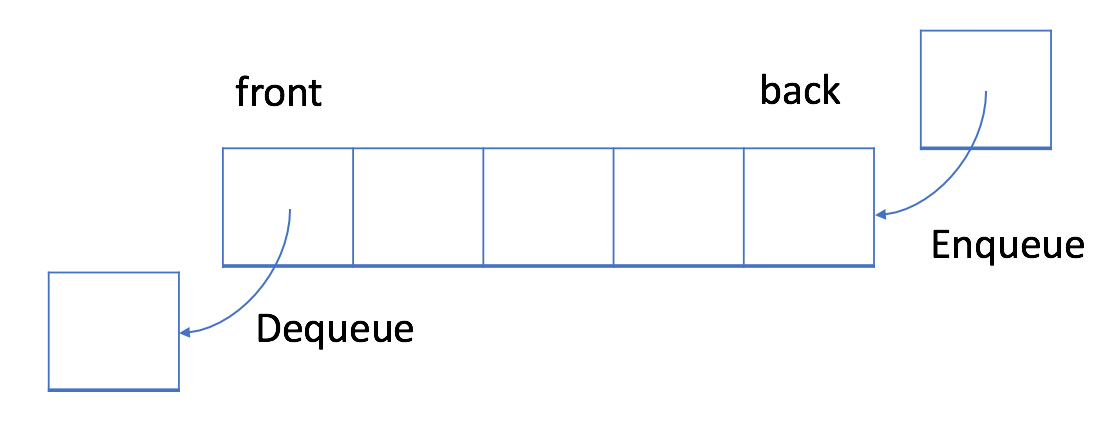1、先入先出的数据结构 —— 栈
1.1、定义及基本操作

在FIFO数据结构中,将首先处理添加到队列中的第一个元素。如上图所示,队列是典型的FIFO数据结构。插入(insert)操作也成为入队(enqueue),新元素始终被添加在队列的末尾。删除(delete)也被称为出队(dequeue),你只能移除第一个元素。
新元素6的入队操作如下:


第一个元素元素5出队操作如下:


1.2、实现
为了实现队列,我们可以使用动态数组和指向队列头部的索引。
如上所述,队列应支持两种操作:入队和出队。入队会向队列追加一个新元素,而出队会删除第一个元素。 所以我们需要一个索引来指出起点。
这是一个供你参考的实现:
1 // "static void main" must be defined in a public class. 2 3 class MyQueue { 4 // store elements 5 private List<Integer> data; 6 // a pointer to indicate the start position 7 private int p_start; 8 public MyQueue() { 9 data = new ArrayList<Integer>(); 10 p_start = 0; 11 } 12 /** Insert an element into the queue. Return true if the operation is successful. */ 13 public boolean enQueue(int x) { 14 data.add(x); 15 return true; 16 }; 17 /** Delete an element from the queue. Return true if the operation is successful. */ 18 public boolean deQueue() { 19 if (isEmpty() == true) { 20 return false; 21 } 22 p_start++; 23 return true; 24 } 25 /** Get the front item from the queue. */ 26 public int Front() { 27 return data.get(p_start); 28 } 29 /** Checks whether the queue is empty or not. */ 30 public boolean isEmpty() { 31 return p_start >= data.size(); 32 } 33 }; 34 35 public class Main { 36 public static void main(String[] args) { 37 MyQueue q = new MyQueue(); 38 q.enQueue(5); 39 q.enQueue(3); 40 if (q.isEmpty() == false) { 41 System.out.println(q.Front()); 42 } 43 q.deQueue(); 44 if (q.isEmpty() == false) { 45 System.out.println(q.Front()); 46 } 47 q.deQueue(); 48 if (q.isEmpty() == false) { 49 System.out.println(q.Front()); 50 } 51 } 52 }